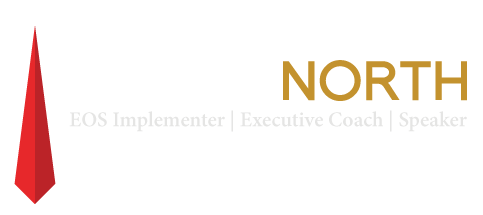High performance organizational culture – seven known and one unknown characteristics.
Imagine this: You’re in an environment where everyone is laser-focused, working with passion and excitement and being optimally productive (wouldn’t that be blissful!?). In world-class athletics, we refer to this as the flow state. At times, individual athletes experience it and teams attain it — and it creates optimal performance. In business and sports, you must be in a high-performance environment or culture to achieve the flow state and perform optimally.
The effect of a high-performance culture.
A high-performance organizational culture creates loyal employees who, in turn, create loyal customers who, in turn, make high-performance culture companies highly profitable.
So what makes a high-performance culture? There are both known characteristics of high-performance cultures and some relatively unknown characteristics of high-performance cultures. Here are seven of the known characteristics of high-performance cultures (there are others):
Seven known characteristics of high-performance organizational cultures.
1. Shared mission and vision. Everyone understands and buys in to the mission (purpose) and vision (ideal future state) of the organization.
2. Aligned. Everyone’s goals and actions are aligned with accomplishing the vision.
3. Customer-focused. The ultimate focus is on the external customer for whom the organization provides services or products. There’s also a focus on internal customers because many people’s deliverables are to somebody within the company.
4. Performance-driven. High-performing organizations purge entitlement and reward performance.
5. Trust. There’s open, honest communication, and people trust others to complete what they commit to in the agreed-on time frame at the level of quality expected and they never have to watch their back.
6. Teamwork. Everyone relies on one another. Nothing gets done in a vacuum.
7. Integrity. All decisions and actions reflect agreed-on moral and ethical principles. The Enron crash exemplified the importance of integrity to sustainable high performance.
If your culture includes the seven characteristics above, you likely have a high-performance culture. If you want to raise the culture bar higher, here’s one of the unknown characteristics of high-performing individuals and organizations that will improve your culture, performance and profitability even more:
An unknown characteristic of high-performance cultures. No blaming, complaining or excuses. Most people whine, complain and make excuses. Here’s an excerpt from my conversation with Gary, a typical small-company owner, about a high-performance coaching program for his sales team:
TC: “Gary, there are some specific guidelines for participants in this program, including no whining, complaining or excuses during the coaching period.”
Gary (hearing this, he grabbed his head like he was in pain): “TC, if my salespeople can’t whine, complain or make excuses, I’m gonna have a sales team … that doesn’t talk!”
Unfortunately, this is often the situation. Most people — certainly most underperformers — whine, complain and make excuses. It’s comforting to those who don’t want to take responsibility for their bad results or situations.
Whining, complaining and excuses make you a victim of your own negative thinking. They’re also disempowering, and they lower self-esteem and self-confidence. In high-performance cultures and high-performance teams and organizations, there’s little to no whining, complaining or excuses. People take full responsibility for deadlines, goals and mistakes. This is one of the greatest differentiators of all high-performance culture characteristics!
So what can you do? Negative emotions spread like a virus. Avoid exposure and build immunity. How can you help your business team, your family or any other team eliminate whining, complaining and excuses?
The two-buck rule. Here’s a simple and entertaining technique I’ve witnessed working with groups of executives, entrepreneurs and sales professionals. It’s called the two-buck rule. Everyone involved agrees that anytime they whine, complain or make an excuse, they must immediately put $2 in a pot used only for collecting these donations, including $2 for every five minutes they’re late for a meeting (no excuse for being late.) If the person doesn’t have $2, he or she writes an IOU and puts it in the pot. Your group decides in advance what to do with the money collected. My preference is to donate it to a charity.
What would it be like to be free from people’s whining, complaining and excuses?
Make a difference. The two-buck rule is beginning to spread and is helping eliminate the emotional toxicity of whining, complaining and excuses. How about starting the two-buck rule with your team or family? If you do, let me know how it goes!
Want to learn eight more unusual characteristics of high-performance cultures?
Click here.


